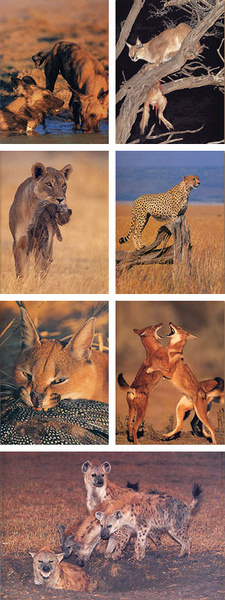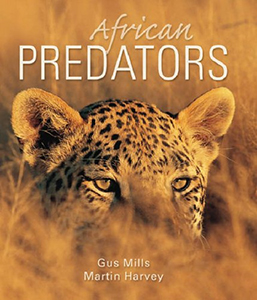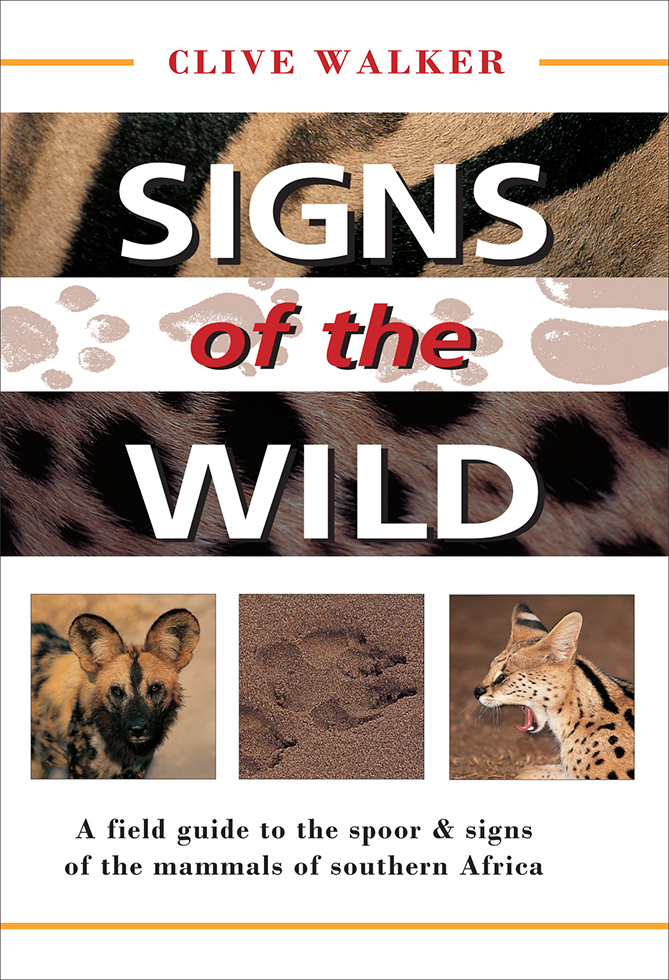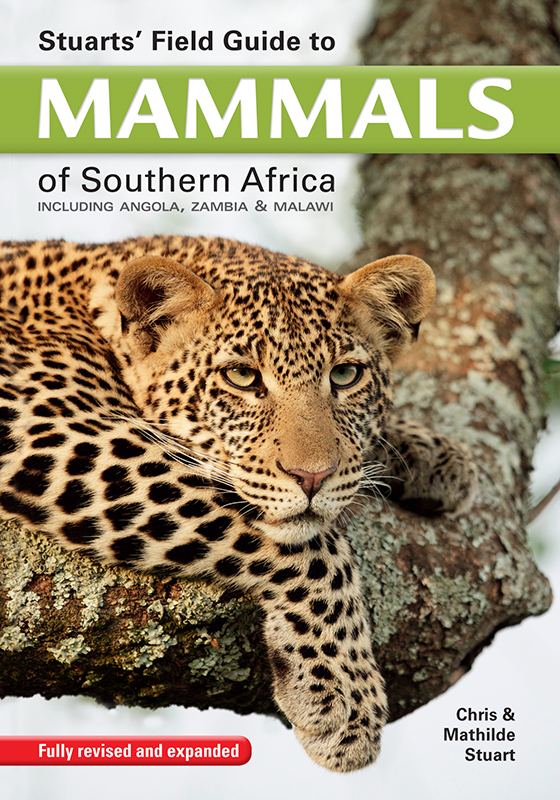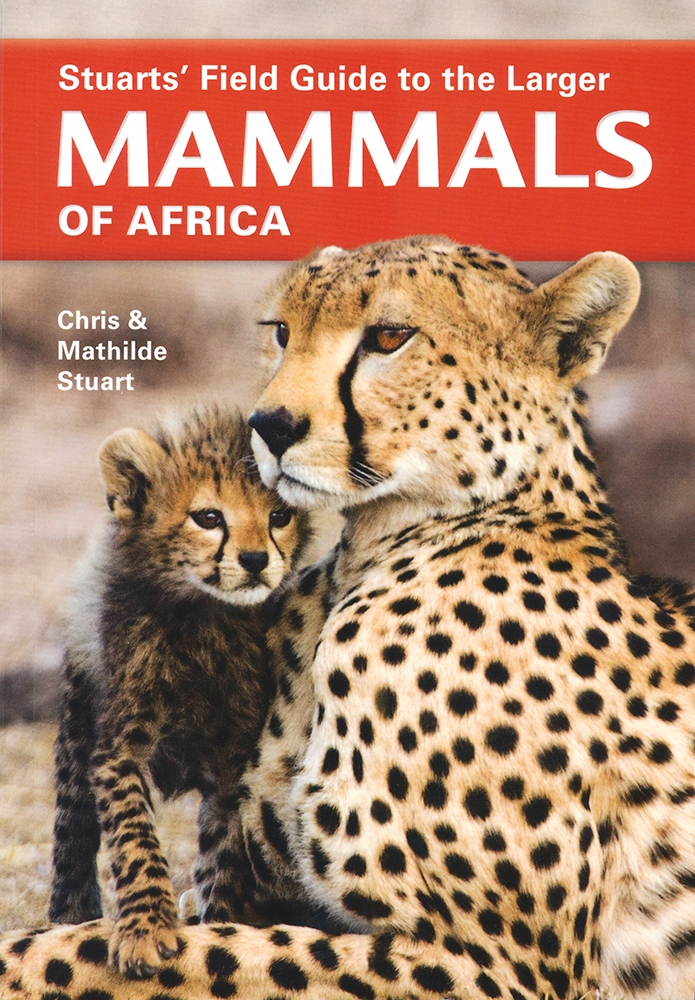African Predators, by Gus Mills and Martin Harvey
The book African Predators is about 14 of the larger African predators belonging to the mammalian Order Carnivora, one of the approximately 20 orders of mammals. Authors are Professor Gus Mills and Martin Harvey.
In taxonomic terms, hence, they are carnivores (unlike humans or crocodiles or raptors, all of which may be called carnivorous creatures but are not carnivores). The carnivores described here are those confined to the terrestrial eco-systems of Africa and are species in which the adult females do not usually weigh less than about 10 kg. They belong to three of the ten families generally recognized in the Order Carnivora: Felidae (cats), Hyaenidae (hyaenas) and Canidae (dogs). By and large they prey on the diverse ungulate (hooved) animals of Africa. Despite the name, however, not all carnivores feed exclusively on meat. Jackals, for instance, survive on a diet of meat and fruits; the aardwolf eats almost nothing but termites; and the giant panda (also a member of the Order Carnivora) lives almost entirely on bamboo shoots. There are over 260 carnivore species on earth and they range in size from the 50 g least weasel to the 2400 kg southern elephant seal. Most of them are land animals; some like the otter spend much of their lives in water; and about 30 species, the seals and their relatives, are marine, leaving the sea once a year to breed. What makes an animal, including an omnivorous African predator, a carnivore? The unifying feature of this group is the modification of the fourth premolar tooth in the top jaw and the first molar in the bottom jaw into a set of scissor-like teeth called the carnassials, which are set back in the mouth and are used for shearing through meat. However, it is not quite as simple as that. Some carnivores, such as the giant panda and the aardwolf, do not possess carnassials. To qualify for inclusion, it is sufficient that an animal’s evolutionary ancestors possessed carnassials and were meat-eating. The classification and evolutionary history of carnivores are controversial subjects that have been - and still are - the subject of hot debate, discussion and, on occasion, disagreement among scientists. The problem, of course, is that we cannot go back in time. We have to make do with a rather patchy fossil record and try to piece together what really happened. In spite of this, it is remarkable how much of the early history of mammals has been uncovered by palaeontologists, evolutionary biologists and geneticists. The development of accurate methods for dating fossils is of particular importance, and the story is gradually unfolding.
It goes something like this: At the time of the extinction of the dinosaurs, about 65 million years ago, mammals were small shrew-like creatures. The rapid mass extinction of the dinosaurs - the dominant animals on earth at the time - opened up ecological vacancies or niches, including that of predator, that were soon filled by the mammals. The early mammalian predators were marsupials, the earliest of which was a small, opossum-like creature with a pointed snout and large ears. All shapes and sizes of these early marsupial carnivorous creatures dominated the southern continents for 30 million years. On the northern continents, however, placental mammals were evolving. In placental mammals, the young develop inside the mother’s womb, instead of in a pouch after birth. One of these placental mammals was Cimolestes, a creature the size of a squirrel that lived on insects. Cimolestes possessed a very important feature, namely a flattening of the cheek teeth, which provided the beginnings of a scissor action. Over several millions of years, these cheek teeth were refined to slice meat in what became the carnassial shear.
Interestingly, the carnassial shear was inherited by two separate groups of mammals: the initially dominant Creodonts and another group that gave rise to the modern Carnivora. In the fossil record from 55 to 35 million years ago, a number of cat-, dog-, bear- and hyaena-like animals are found, some even with sabre teeth, but none of these are true Carnivora. Then the fossil record shows a change: more Carnivora species and fewer and fewer Creodonts. The reason for this replacement of Creodonts by Carnivora is not clear. One explanation is that the carnassial shear in the Carnivora was situated more to the front of the mouth than in the Creodonts. This meant that the teeth further back in the mouth could still be used for feed-ing on vegetable matter and other foods. As a result, perhaps, the Carnivora were able to exploit a greater variety of ecological niches than could the Creodonts, who had no teeth behind their carnassial shears and, thus, could eat only meat. [...]
This is an excerpt from the book: African Predators, by Gus Mills and Martin Harvey.
Title: African Predators
Authors: Martin Harvey and Gus Mills
Struik Publishers
Cape Town, South Africa 2005
ISBN 9781770072206
Hardcover, dustjacket, 24x29 cm, 160 pages, throughout colour photos
Harvey, Martin und Mills, Gus im Namibiana-Buchangebot
African Predators
The behaviour, social make-up, relations and interactions of African predators are supported by superb and dramatic photography.
Weitere Buchempfehlungen
Signs of the wild. A field guide to the spoor and signs of the mammals of southern Africa
Clive Walker's tracking guide Signs of the wild focusses on spoor and signs of the mammals of southern Africa.
Stuarts' Field Guide to Mammals of Southern Africa
Stuart's Field Guide to Mammals of Southern Africa covers near to 400 mammal species including Angola, Zambia and Malawi since the 5th edition of 2015.
Stuarts’ Field Guide to the Larger Mammals of Africa
Stuarts’ Field Guide to the Larger Mammals of Africa concentrates on the more visible and easily distinguished larger species.
Keith Kirsten's Garden Plants & Flowers
Keith Kirsten’s Garden Plants & Flowers is a compact directory of trees, shrubs and flowering plants that are ideal for growing in South African gardens.

